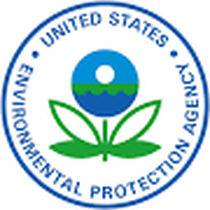Toxic Release Inventory Report -
|
For the rest of you who are still working on your TRI reports or if you are not sure whether TRI applies to your operations, I recommend you do the following:
USEPA-CDX Access
Applicability Determination
Lastly, the following are some TRI changes to remember for the 2017 and 2018 reports:
USEPA-CDX Access
- If your preparer or certifying official has left the company, then make sure their replacement gets set up with an account and password sooner than later. Remember, the certifier has paperwork to sign and send back to USEPA. If this person travels, it can be a challenge to get this accomplished before the deadline.
- If your preparer or certifying official is still there, they will need to update their passwords. This is an annual thing. Make sure it gets done before you need to submit, especially because travel schedules may interfere with getting the report submitted on time.
Applicability Determination
- Find out once and for all whether or not the TRI requirements apply to your facility. Document your findings and keep the records in your auditable file in case you get inspected. Update them annually if you have significant production increases or raw materials changes.
Lastly, the following are some TRI changes to remember for the 2017 and 2018 reports:
- 1-Bromopropane - On November 23, 2015, EPA published a final rule that added 1-bromopropane to the TRI list of reportable chemicals. 1-Bromopropane has been classified as “reasonably anticipated to be a human carcinogen” by the National Toxicology Program in its 13th Report on Carcinogens document. Facilities that meet reporting thresholds for 1-bromopropane during 2016 should submit reporting forms by July 1, 2017.
- Hexabromocyclododecane (HBCD) - On November 28, 2016 EPA finalized a rule adding the HBCD category to the Toxics Release Inventory (TRI) list with a 100-pound reporting threshold. This final rule became effective November 30, 2016. HBCD is a brominated flame retardant found in the environment, in wildlife, and in humans. HBCD presents potential human health concerns for developmental and reproductive effects, is highly toxic to aquatic and land-dwelling organisms, bioaccumulates, and is persistent in the environment. Facilities that meet TRI reporting thresholds for HBCD should collect release information during the 2017 calendar year in order to be prepared for the TRI report due in July 2018.
To learn more about EPA's TRI Program click here or call us!
A story brought to you by Schneider Risk Management, LLC


